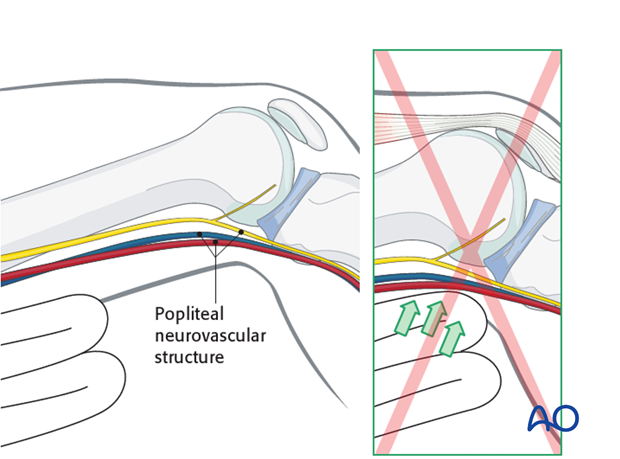Supine position for nailing
1. Perioperative checklist
Before starting the procedure, it is good practice to confirm a number of basic but important factors:
- Confirm the patient and the limb to be operated on.
- Reevaluate the patient’s condition and that of the local soft tissue.
- Check that IV antibiotics have been started within the last 60 minutes.
- Wash the leg.
2. Positioning
The patient is placed supine.
The knee will need to be flexed to 90-110° for entry site access, and some kind of support is usually necessary so the tibia remains aligned and the foot can rest on something while the nail is driven home.
A small bolster may be placed underneath the buttocks of the injured leg. Slightly tilting the pelvis helps neutralize the tendency for external rotation of the limb.
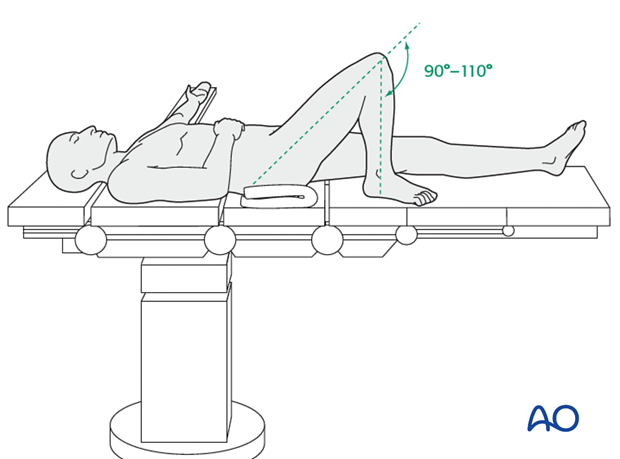
3. Position of the knee
It must be possible to flex the knee by 90-110°.
This can be achieved by placing a foam triangle under the knee,...
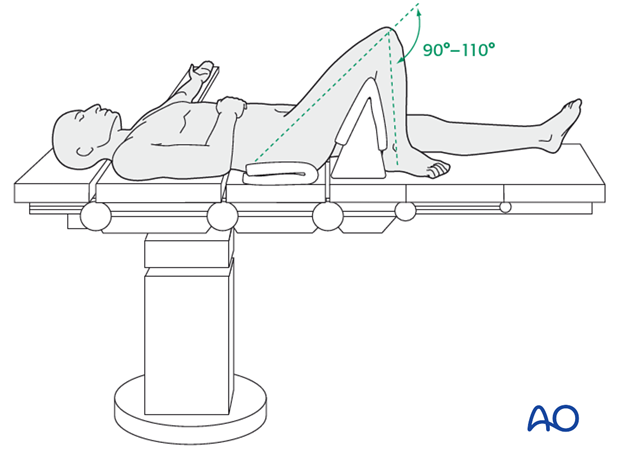
... or by an assistant’s holding the thigh.
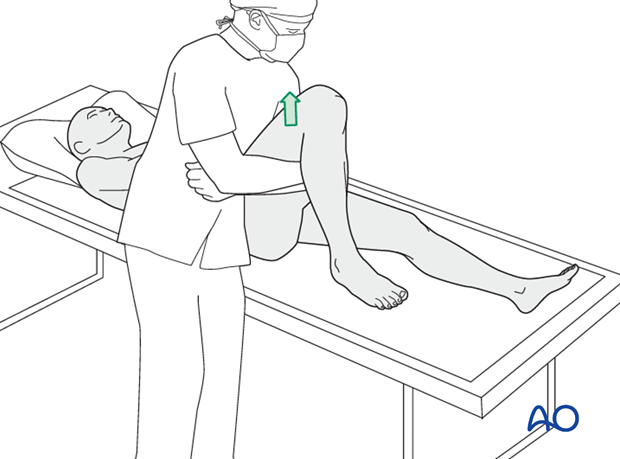
4. Alternative position
As an alternative, the operating table can be flexed. Place a bolster under the thigh to allow for up to 110° of knee flexion.
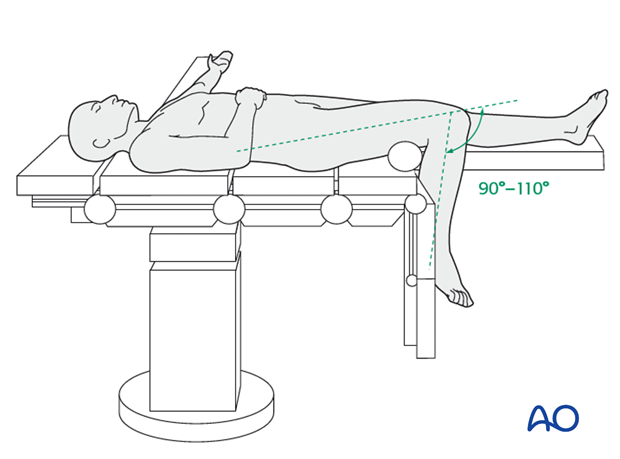
5. Pitfall: location of posterior support
Any support should be under the thigh and not press upon the popliteal fossa. This allows better knee flexion and avoids neurovascular compression.
